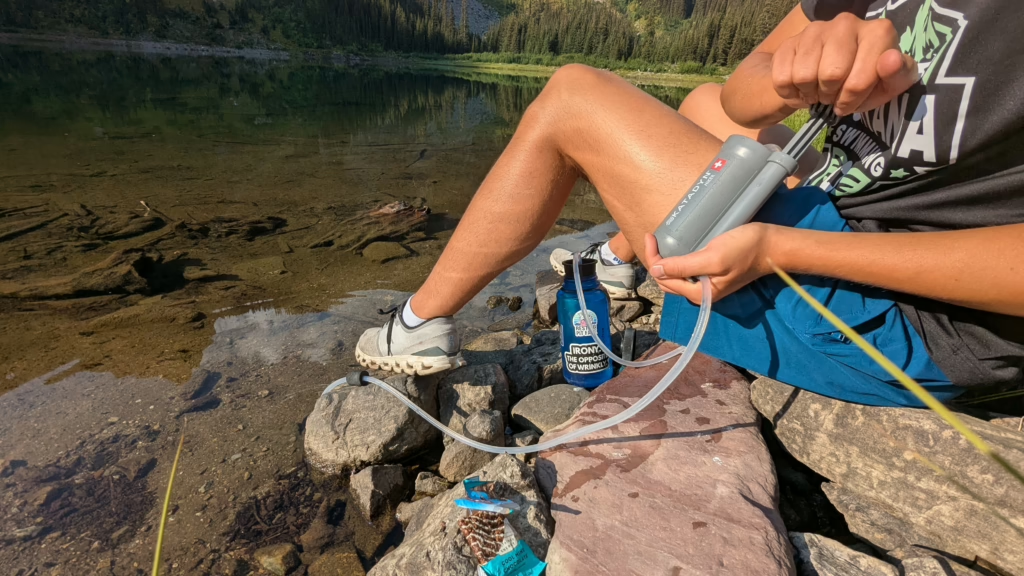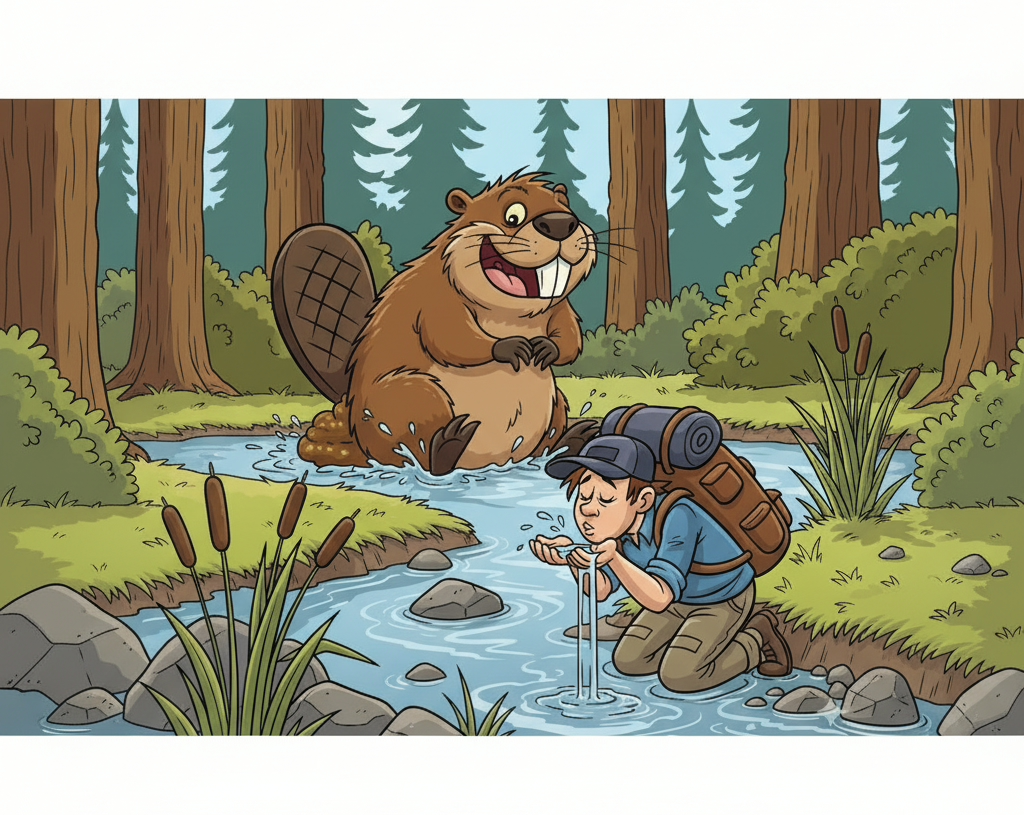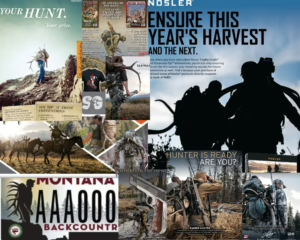Why Hydration Matters in the Backcountry
You need water. It’s that simple. It can be hot or cold outside. Cloudy or sunny. You need to drink when you’re in the woods, especially when you’re at altitude and/or exerting yourself. When you’re miles from camp, the air is thin, your mouth is dry, and a nagging headache creeps in. You tell yourself it’s just the altitude, but more often than not, it’s dehydration. Soon, you might be in for altitude sickness, too. For the love of God man, don’t be a statistic. Let me help you.
Water makes up about 60% of our body, and in the backcountry, you’re burning through it faster than you think. A loss of even 2% can sap your energy, cloud your thinking, and make every uphill step feel like you’re dragging lead. On a backcountry hunt or camping trip, that’s more than an inconvenience; it downright sucks or worse. And don’t think you can drink out of any old creek. It’s not that easy.
Dehydration: The Silent Trip Killer
Most of us know the signs: headache, fatigue, muscle cramps. But in the backcountry, they can escalate quickly into heat exhaustion, heat stroke, or altitude sickness. Hunting at 10,000 feet or camping in dry mountain air can dehydrate you just as fast as a sweltering summer day. Cold weather makes it worse. Your body loses moisture with every frosty breath, and because you don’t feel thirsty, you forget to drink.
👉 Pro Tip: Electrolytes are your friend. A couple of NUUN tablets weigh almost nothing and can be the difference between trudging back to camp or pushing confidently toward your goal.
The Illusion of “Clean” Water
If you’ve ever watched an old Western, you’ve probably seen the hero kneel by a sparkling creek and take a long drink. In reality, that same water could be carrying giardia, cryptosporidium, bacteria, or viruses. One careless sip can turn your dream hunt or long-awaited camping trip into a miserable week doubled over with cramps.
Veteran hunters call it “beaver fever” for a reason. Wildlife lives upstream, and so do all the contaminants they leave behind. The water may look pure, but unless you’ve treated it, you’re rolling the dice.

How to Purify Water in the Backcountry
Boiling: The Old Standby
Long before filters and tablets, mountain men boiled their water. It’s still effective today—three minutes at a rolling boil (longer at high elevation) kills just about everything. The downside? Fuel and time.
Chemical Treatments: Ultralight and Simple
Modern chlorine dioxide tablets (like Aquamira or Katadyn Micropur) have replaced the iodine pills of old. They’re light, simple, and great for ounce-counters. Just know they take 30 minutes to 4 hours, depending on what you’re fighting, and they don’t remove grit or floaties.
UV Light: The High-Tech Fix
Stir a SteriPEN UV purifier in your Nalgene for 90 seconds, and you’ve got safe water. They’re fast and effective against nearly everything, but they need batteries—and batteries don’t always cooperate in freezing weather. I’ve attempted to use one of these in past, and it refused to work. Operator error? Perhaps, but I prefer a filter.
Filters: The Modern Standard
For most hunters and campers, a filter strikes the best balance:

- Pump filters (Katadyn Hiker Pro) move water quickly for groups.
- Squeeze filters (Sawyer Squeeze, Platypus QuickDraw) weigh almost nothing and screw onto Smartwater bottles.
- Bottle-integrated purifiers (Grayl Geopress) are quick, all-in-one solutions for solo trips.
👉 Cold-weather hack: Sleep with your filter inside your bag at night. If it freezes, it can crack internally and stop working.
Carrying Water: The Real Game-Changer
Here’s where many hunters and campers go wrong. They treat their water, stash it deep in their pack, and forget about it. Hours later, they’re dry-mouthed and sluggish.
Think of it this way: you wouldn’t keep your bear spray or handgun buried in your bag. Water deserves the same treatment.
- Hydration Bladders (HydraPak, CamelBak, Stone Glacier Hydro Sleeve): Sip as you go without breaking stride—perfect for covering ground during a hunt.
- Bottles (Nalgene, Smartwater, Hydro Flask): Simple, durable, easy to monitor intake. Better in freezing conditions. Pour warm water in them and put it in your bag at night. Toasty!
- Hybrids: A Smartwater bottle paired with a Sawyer Squeeze is a favorite for ultralight hikers and hunters alike.
The method doesn’t matter as much as accessibility. The more convenient your system, the more you’ll actually drink.
FAQs: Backcountry Hydration for Hunting & Camping
Q: How much water do I need?
A: Plan for about ½ liter per hour of moderate activity, and adjust for heat or altitude. Always drink more.
Q: Do I really need to filter high-mountain water?
A: Yes. Even pristine alpine lakes can carry giardia from wildlife.
Q: What’s the best setup for hunters?
A: Many hunters use a hydration bladder for access paired with a Sawyer Squeeze or Katadyn BeFree for refilling on the move.
The backcountry rewards preparation—and punishes shortcuts. You can go without food for days, but water? That’s a different story.
Whether you’re glassing a ridge for elk or sitting by a campfire with friends, hydration is the foundation that makes it possible. With today’s lightweight filters, electrolytes, and hydration systems, staying safe and strong is easier than ever.
Carry smart. Treat everything. Drink often. That’s how you keep your hunt or camping trip from ending before it begins.
About the Author: PJ DelHomme runs Crazy Canyon Media in western Montana. He recently got back from a trip to his neighborhood wilderness area where he drank copious amounts of water thanks to the heat and smoke of early September. A pump filter was used and as of this writing, he does not have giardia.







